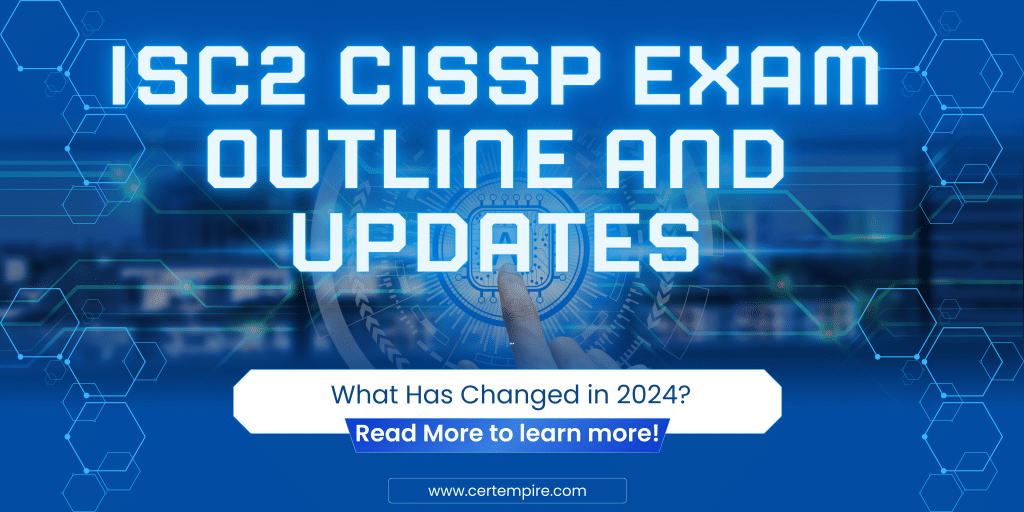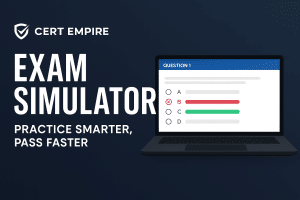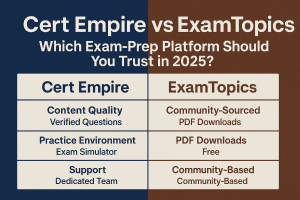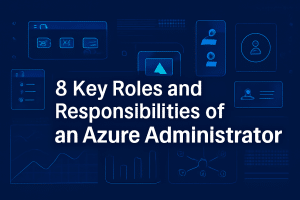If you’re preparing for the CISSP exam, you’re likely aware that ISC2 regularly updates the exam to reflect changes in the cybersecurity landscape. The CISSP exam is already a comprehensive and challenging test, and understanding the latest updates is key to ensuring your preparation is aligned with what you’ll face on exam day.
In this blog, we’ll take a close look at the 2024 updates to the CISSP exam outline, discussing the newly emphasized topics, changes in the exam format, and the importance of these updates for your study plan.
TLDR: Too Long; Didn’t Read
The CISSP exam outline was updated in April 2024 to emphasize emerging trends in cloud security, zero trust, and the evolving cybersecurity threat landscape. The updated exam now includes more focus on cloud environments and advanced cybersecurity concepts, reflecting industry shifts. If you’re preparing for the exam, be sure to focus on these newer areas to align with the updated content.
Key 2024 CISSP Exam Updates
| Area of Update | What’s New | Reason for Change |
| Zero Trust Architecture | Deeper coverage in Security and Risk Management | Reflects the rise of zero trust as a core cybersecurity strategy. |
| Cloud Security | More detailed cloud access and configuration management topics | To align with rapid adoption of cloud technologies. |
| Emerging Threats | Greater focus on AI-driven attacks and evolving ransomware tactics | Keeps the exam relevant to modern security threats. |
| Privacy & Compliance | Expanded GDPR/CCPA implications | Addresses global privacy regulations and compliance trends. |
What Has Changed in the CISSP Exam Outline for 2024?
ISC2’s CISSP exam outline is reviewed regularly to ensure that the certification stays relevant to current cybersecurity challenges. For 2024, cloud security and zero trust architecture have received increased emphasis, reflecting the shift towards cloud-first infrastructures and modern security models.
Here are the key changes and updates that you should be aware of:
1. Increased Focus on Cloud Security
With the shift towards cloud-based services, cloud security has become a significant concern for organizations. In the updated CISSP exam outline, cloud security has gained more weight across multiple domains, particularly Security Architecture and Engineering and Security Operations.
Key Changes:
- Cloud Security Architecture now features more heavily in the exam.
- Cloud Risk Management and cloud-based security controls are now emphasized.
- Topics like identity management in cloud environments and data protection in public cloud services are included.
Why It’s Important:
The widespread adoption of cloud services means that security professionals need to be able to design, implement, and manage security policies in cloud environments. As a CISSP candidate, you’ll need to understand how traditional security practices apply to cloud platforms like AWS, Microsoft Azure, and Google Cloud.
Preparation Tips:
- Study the shared responsibility model in cloud environments.
- Get familiar with cloud security frameworks and tools, such as cloud access security brokers (CASBs).
2. More Emphasis on Zero Trust Architecture
The concept of Zero Trust Security has gained traction in recent years as organizations move towards more dynamic and distributed network environments. The Zero Trust model assumes that no one, whether inside or outside the network, is trusted by default.
Key Changes:
- Zero Trust principles are now incorporated into Identity and Access Management (IAM) and Security Operations domains.
- New topics focus on Zero Trust networks, continuous authentication, and least privilege access.
Why It’s Important:
Zero Trust is no longer a niche concept; it’s now a standard approach for securing modern infrastructures, especially with the rise of remote work and BYOD policies. Understanding how to design and implement a Zero Trust architecture will be key to passing the updated exam.
Preparation Tips:
- Learn about network segmentation, least privilege access, and micro-segmentation.
- Study continuous authentication and adaptive authentication techniques.
3. Stronger Emphasis on Evolving Cybersecurity Threats
The 2024 update also reflects the increasing sophistication of cyber threats. The CISSP exam now places greater emphasis on understanding emerging threats and the strategies used to combat them.
Key Changes:
- Advanced persistent threats (APT) and cyber threat intelligence are now more prominent in the exam.
- Topics around threat actor behavior and incident response have been expanded.
Why It’s Important:
Cybersecurity professionals must be prepared to face a constantly evolving landscape of threats, ranging from sophisticated nation-state actors to emerging cybercrime groups. This makes understanding the latest threat vectors a must.
Preparation Tips:
- Stay up to date on emerging cybersecurity threats like ransomware, AI-based attacks, and deepfakes.
- Learn about threat intelligence platforms and incident response frameworks (e.g., NIST).
4. Minor Revisions to the Exam Format
While the overall format of the CISSP exam hasn’t changed significantly, ISC2 has made a few minor tweaks to the question types and scoring system.
Key Changes:
- Adaptive Testing: The exam continues to use Computerized Adaptive Testing (CAT), which adjusts the difficulty of questions based on your performance as you go.
- Question Types: The exam includes a mix of multiple-choice, drag-and-drop, and hotspot questions. The inclusion of scenario-based questions has increased to assess real-world application.
Why It’s Important:
The adaptive testing format ensures that the exam tailors itself to your knowledge level. This means that preparing for the practical application of security concepts in real-world scenarios is essential.
Preparation Tips:
- Practice with CISSP exam simulators to get used to the adaptive nature of the test.
- Focus on applying theoretical knowledge to practical, real-world situations.
5. Other Notable Changes in Specific Domains
While the major changes focus on cloud security, zero trust, and emerging threats, there have also been small updates in several domains.
Key Changes:
- Identity and Access Management now includes a focus on Identity Federation and Single Sign-On (SSO) systems.
- Security Operations now covers more about SOC (Security Operations Center) operations and SIEM systems.
- Updates in Security Architecture reflect the importance of security-by-design in modern applications and infrastructure.
Why It’s Important:
Understanding how these concepts fit into broader security frameworks will help you adapt to an ever-changing cybersecurity environment.
Preparation Tips:
- Review the updated CISSP syllabus and domain outlines from ISC2.
- Use updated CISSP study guides and practice exams that reflect the latest changes.
CISSP Domain Weight Changes (2023 → 2024)
| Domain | Old Weight | New Weight | Key Adjustment |
| Security and Risk Management | 15% | 16% | Increased focus on governance, compliance, and zero trust. |
| Asset Security | 10% | 10% | No change. |
| Security Architecture & Engineering | 13% | 13% | No change; updated emphasis on cloud infrastructure. |
| Communication & Network Security | 14% | 13% | Slight decrease; updated to reflect new network security practices. |
| Identity & Access Management (IAM) | 13% | 13% | No change; added cloud identity management scenarios. |
| Security Assessment & Testing | 12% | 12% | No change. |
| Security Operations | 13% | 13% | No change; more incident-response focus. |
| Software Development Security | 10% | 10% | No change; stronger emphasis on DevSecOps practices. |
Quick Summary
The CISSP exam outline was updated in April 2024, with significant changes to emphasize cloud security, zero trust models, and evolving cybersecurity threats. These updates reflect current trends in the industry, such as the rise of cloud-first security strategies and Zero Trust principles. As you prepare for the exam, focus on these new areas, along with mastering the existing domains like network security, risk management, and incident response.
Final Thoughts
The CISSP exam remains one of the most comprehensive certifications in cybersecurity. With the 2024 updates, ISC2 has ensured that the exam remains relevant to current security challenges. By understanding the changes, you can tailor your study plan to address new topics like cloud security, Zero Trust architectures, and emerging cyber threats.
Whether you’re a seasoned professional or just beginning your journey towards CISSP certification, staying up-to-date with these changes will ensure you’re fully prepared for the exam.
More Resources
For a complete breakdown of the CISSP exam, visit the full CISSP exam overview.
If you’re preparing for specific domains or need more resources, check out these related blogs:
- ISC2 CISSP Exam Outline and Updates: What Has Changed in 2024?
- How to Prepare for the CISSP Exam: A Comprehensive Study Plan for Beginners
Last Updated on by Team CE



























